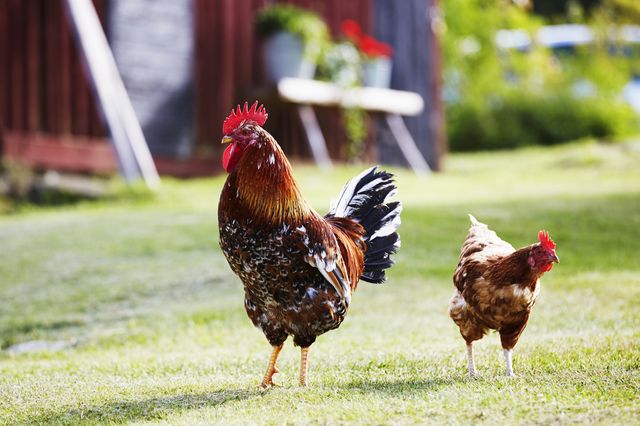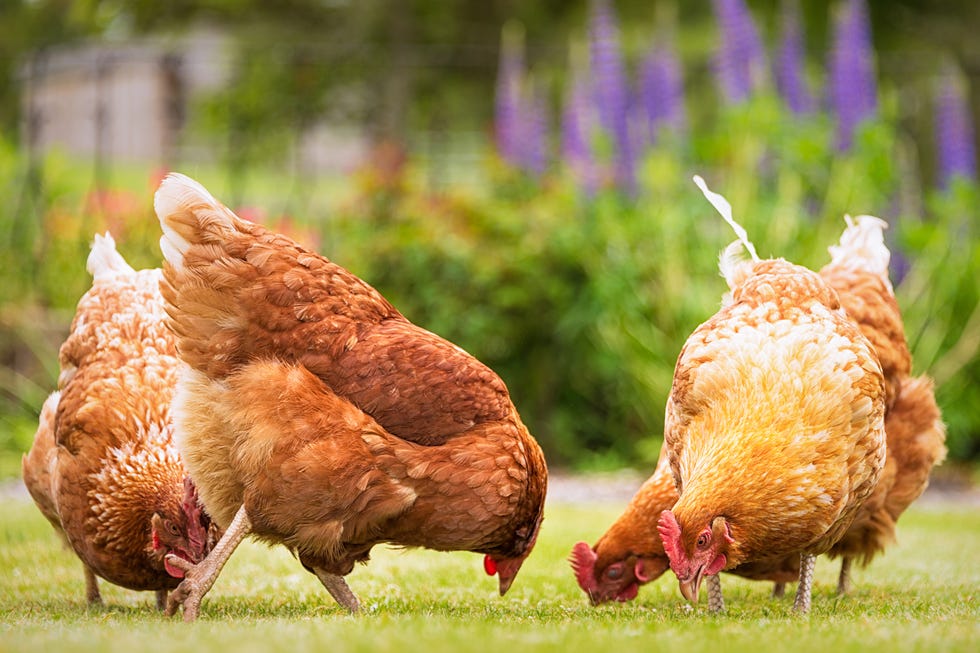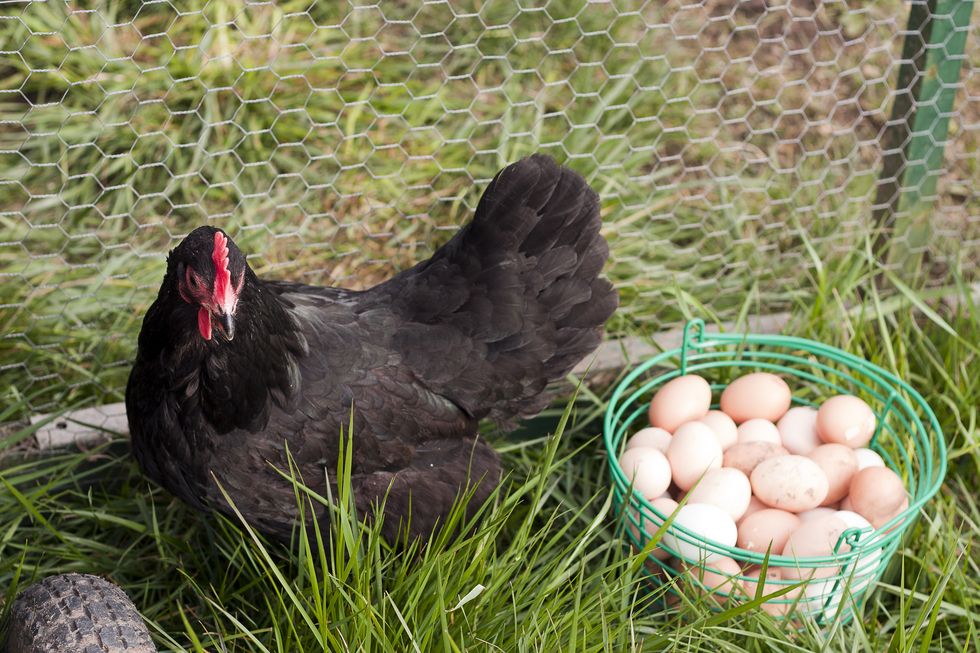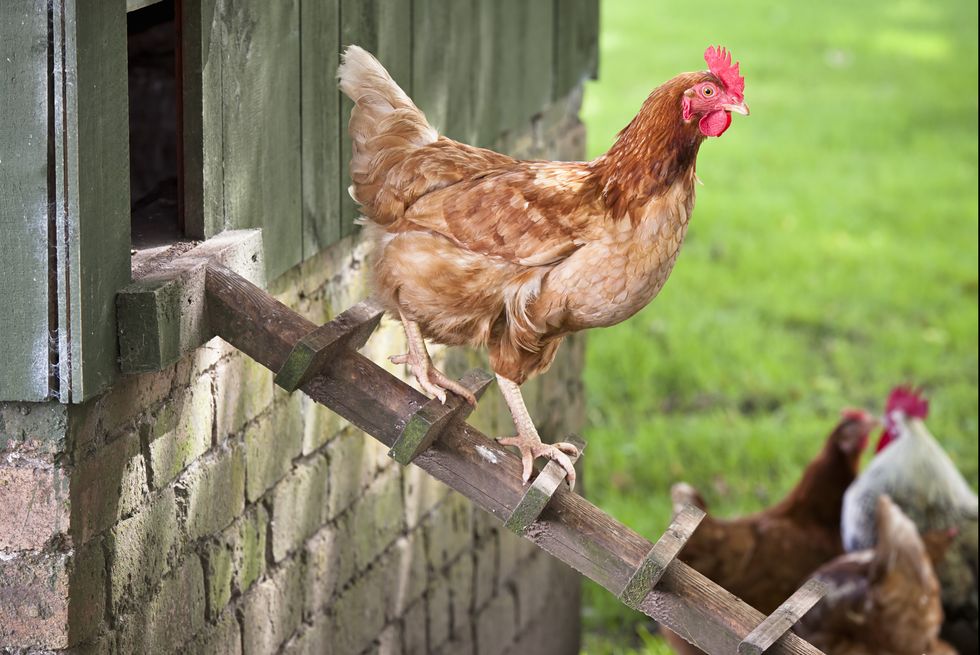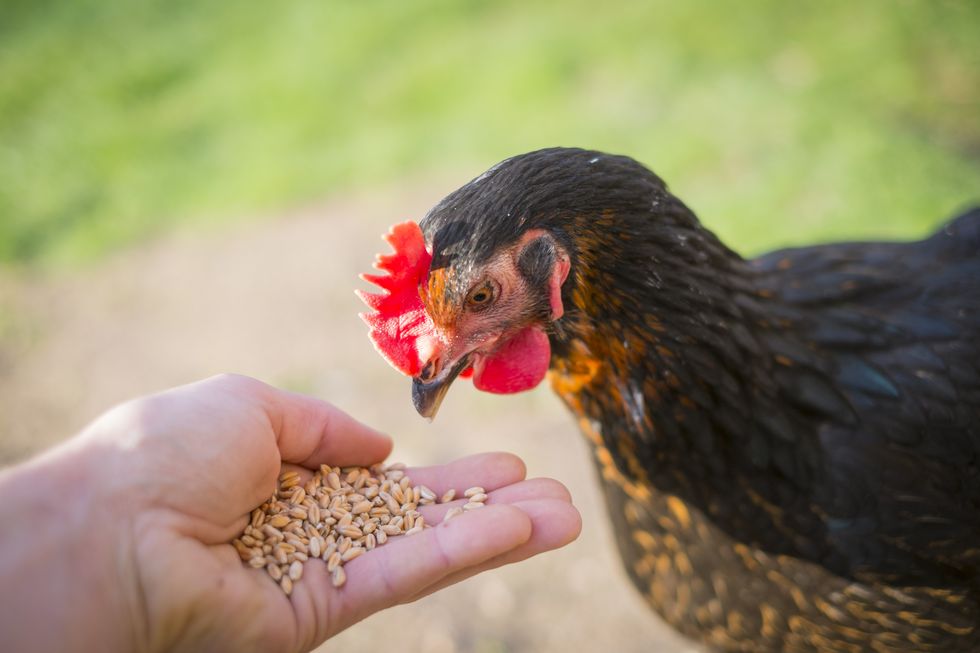The recent chicken renaissance continues to gather momentum, and coops are becoming common in urban and suburban backyards. The surging interest in local and organic foods has certainly contributed to the trend, but many people are learning that chickens also make great pets. They're friendly and easy to care for, and what other animal actually helps you make breakfast? If you're ready to bring some farm yard into your backyard, here's what you need to do to get started.
Know the law.
Check your municipal regulations and/or homeowner association rules. Many areas ban roosters (which isn't a deal breaker; hens will lay eggs without them) and limit the number of animals a household can keep. Some communities require signed agreements from neighbors, permits, or an appearance before the zoning board, while others have ordinances that restrict the size and placement of outbuildings, and some areas have no restrictions at all.
New York City, for example, has never banned hens, says Owen Taylor, the training and livestock coordinator for Just Food, a nonprofit that works to improve access to fresh, healthy, locally grown food in the city. "They're considered pets, like cats and dogs, so zoning laws do not apply," he says.
In communities that outlaw raising chickens, poultry activists are joining together to challenge the laws. Tracy Halward formed the Longmont Urban Chicken Coalition after her family was cited for illegally keeping chickens in their Longmont, Colorado, backyard. The coalition scored a victory when the city council voted to allow a pilot backyard-chicken program, and in March 2009 issued permits to 50 residents, including Halward.
In 2011, the city removed the ban, and similar grassroots movements have overturned chicken bans in Madison, Wisconsin; Ann Arbor, Michigan; and Bozeman, Montana.
Choose your breed.
A benefit of keeping chickens is the opportunity to raise beautiful birds that lay unusually colored eggs. Many breeds come in two sizes: standard (also known as large breed) and bantam, which are typically one-quarter the size of standard birds. Both do fine in back yards, though standard chickens lay much larger eggs than bantams and — because they weigh more — tend to be less flighty.
For dependable egg production, choose lightweight breeds such as Black Australorps (shown above). Dual-purpose breeds (eggs and meat) such as Buff Orpingtons and Silver Laced Wyandottes, are heavier than layers but have better egg production than broilers, breeds used primarily for meat. Many layer, broiler, and dual-purpose breeds are available as standards or bantams.
Most breeds lay either white or brown eggs, though the tint can vary. Welsummers, a rare dual-purpose breed, lay dark brown eggs. And both Araucanas and Ameraucanas lay blue-green eggs, though many of the chickens sold as these breeds are actually "Easter Eggers" — hybrid birds that may lay blue-green, olive, or other tinted eggs.
When building a flock, consider the behavioral and physical characteristics and climate suitability of each breed. Rhode Island Reds are a popular dual-purpose breed that lay large, light brown eggs, but they can be aggressive toward calmer birds such as Brahmas. Breeds with thicker plumage do better in cold climates, while those without a lot of extra insulation, such as Silkies (a fabulously ornamental breed with feathers that look more like fur) live comfortably in warmer climates.
For more about breeds, check out Storey's Illustrated Guide to Poultry Breeds.
Build your coop.
A coop provides shelter for chickens, but it will also be a part of the landscape, so consider aesthetics as well as the chickens' needs when planning for one. Debbie Hoffmann, who keeps chickens in her suburban backyard, paid a carpenter to build a stylish gray-and-white coop with a leaded stained-glass window installed over the nesting boxes. "I had to go before the zoning board to get permission to have the hens," says Hoffmann. "They were really dazzled by the decorative window and I had no trouble."
Even in a fenced backyard, it's not wise to allow chickens to roam free without supervision, both for their security and the safety of your garden. Chickens love to scratch the ground looking for worms and seeds without regard for what plants might be in their way. And in urban and suburban areas, predators come in all shapes and sizes, from coyotes to raccoons to hawks. Danger can come from above and below, so cover the run and bury its fencing at least 1 foot deep. Use 1/4-inch hardware cloth for enclosures instead of chicken wire, which raccoons can easily pull apart and small rodents can squeeze through.
Care for your new pet chickens.
Chickens will dig up part of their diet — insects, slugs, snails, sand, and seeds — but you must also provide them with chicken feed. "Chickens need a quality balanced diet that's 16 to 18% protein and made specifically for their needs," says Phillip J. Clauer, a Penn State poultry expert, who notes that there are special diets for young chicks, growing birds, and layers. As a treat, scatter scratch — a mixture of grains and seeds — into the run, as well as organic grass clippings and vegetable scraps.
Plenty of water is especially important for consistent laying, Clauer adds: "If a laying chicken goes without water for more than 12 hours, it can go out of production for weeks." Special poultry waterers ensure that chickens always have access to fresh water.
Chickens also appreciate human interaction. "This is going to sound weird, but they become your friends," says Debbie Edwards-Anderson, who tends a flock of hens with her husband in Brooklyn. "When I get to my garden gate, I yell out, 'Hey, ladies,' and one will run back and get all the others and they crowd at the gate with all their 'awk, awk' greeting noises," she says. "They are really affectionate in their own strange way."
Although hens can lay as long as they live (eight to 10 years isn't uncommon), they start producing fewer eggs after three to five years. When egg production drops to one or two a week, chicken owners must decide whether to keep the older hens as pets or use them for meat.
Edwards-Anderson's husband, Greg, who grew up with hens in his hometown of Selma, Alabama, is not squeamish about turning their hens into stew when the time comes. But he suspects his wife will have a problem: "This is her first farm-animal experience," he explains. "They're like my babies and I love them," she concurs.
